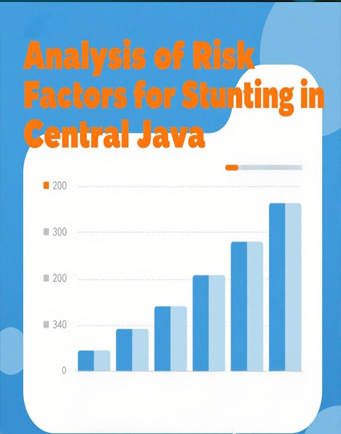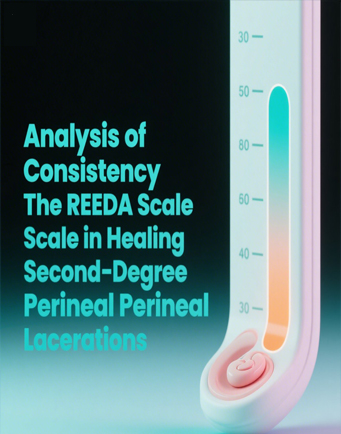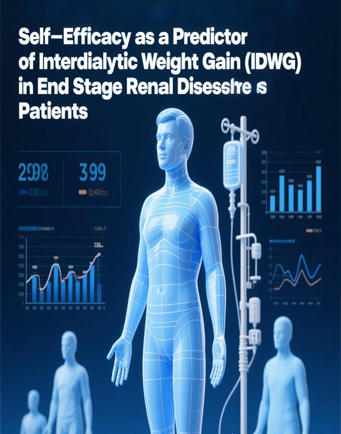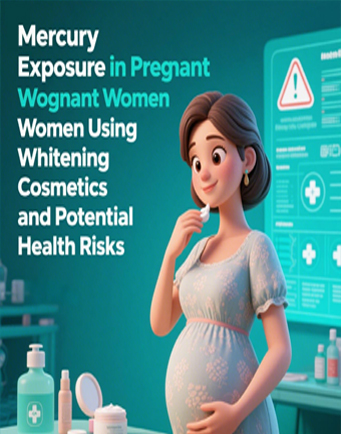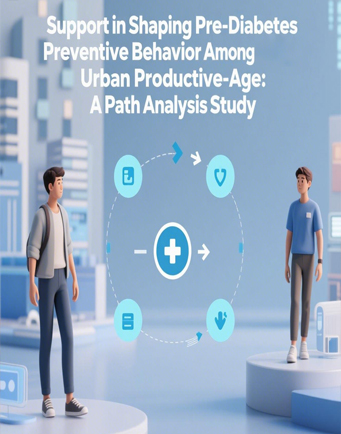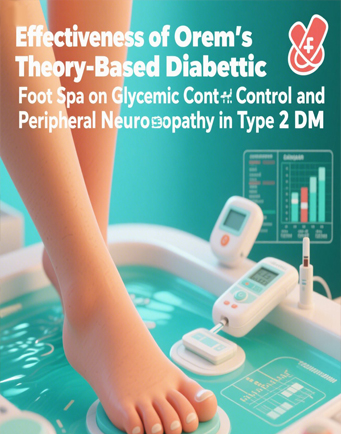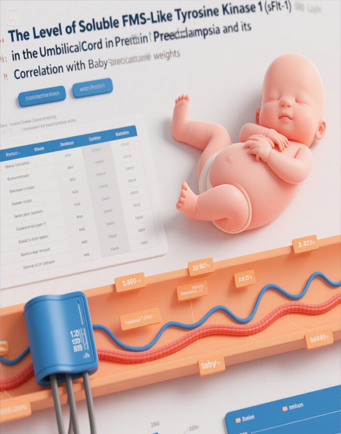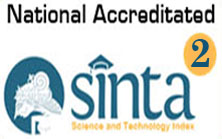Contribution of Household Sanitation to Acute Respiratory Infection Symptoms Among Children: Analysis of the 2017 Indonesian Demographic Health Survey
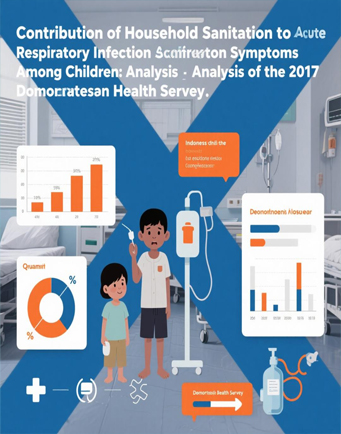
Downloads
Acute Respiratory Infections (ARI) remain one of the primary causes of mortality among children under 5 in Indonesia, and poor inadequate drinking water, sanitation, and hygiene (WASH) conditions can exacerbated the transmission of respiratory pathogens. However, their association with ARIs in Indonesia remains underreported. This study aimed to analyze the contribution of these sanitation conditions to ARI symptoms in children under five in Indonesia. This research method was cross-sectional quantitative design study based on secondary data from the 2017 Indonesian Demographic and Health Survey (IDHS), based on secondary data from the 2017 Indonesian Demographic and Health Survey (IDHS), which was the most recent available at the time of the study. The determined sample consisted all toddlers aged 0-59 months, from women aged 15-49 years. The weighted sample that met the inclusion criteria (children aged 0-59 months, living with their parents, willing to answer questions) and exclusion criteria (missing data and "don't know" answers) consisted of 16,681 observations. Independent variables included sanitation infrastructure, mother’s education, wealth index, and residential location. The dependent variable was reported ARI symptoms in 2 weeks prior to the interview by their mother. Data were analyzed using CI 95% logistic regression to determine associations, and pathway analysis was conducted to explore the direct and indirect relationships among variables. Poor toilet facilities [OR: 1.80, CI: 1.46-2,27] increased the risk of ARI symptom, meanwhile treated water before consumption reduce the risk [OR:0.63, CI:0.51-0.77]. Long travel distances to clean water aslo were found as factor that increased the risk of ARI symptoms [OR:2.31, CI:0.65-3.02]. Indirect factors such as low mother’s education, low wealth index, and rural residency, also contributed to ARI symptoms in children. In conclusion, inadequate household sanitation significantly contribute to ARI symptoms in children under five in Indonesia. These findings underscore the need for improved sanitation infrastructure and targeted health interventions in vulnerable communities.
Abney, S. E., Bright, K. R., McKinney, J., Ijaz, M. K., & Gerba, C. P. (2021). Toilet hygiene—review and research needs. Journal of Applied Microbiology, 131(6), 2705-2714. https://doi.org/10.1111/jam.15121
Afrifa-Anane, G. F., Kyei-Arthur, F., Agyekum, M. W., & Afrifa-Anane, E. K. (2022). Factors associated with comorbidity of diarrhoea and acute respiratory infections among children under five years in Ghana. Plos one, 17(7).
Ahmad, S., Singh, R., Arfin, T., & Neeti, K. (2022). Fluoride contamination, consequences and removal techniques in water: a review. Environmental Science: Advances, 1(5), 620-661. https://doi.org/10.1039/d1va00039j
Aldardasawi, A. M., & Eren, B. (2021). Floods and their impact on the environment. Academic Perspective Procedia, 4(2), 42-49. https://doi.org/10.33793/acperpro.04.02.24
Andres, L., Joseph, G., & Rana, S. (2021). The Economic and Health Impacts of Inadequate Sanitation. Oxford Research Encyclopedia of Environmental Science. https://doi.org/10.1093/acrefore/9780199389414.013.561
Anggraini, N. A., Ambarika, R., & Katupu, N. N. (2024). Factors Influencing the Incident of Acute Respiratory Tract Infections in Children Aged 12-59 Months in Wallandimu East Nusa Tenggara. Journal of Nursing Practice, 8(1), 197-206. https://doi.org/10.30994/jnp.v8i1.656
Aragaw, F. M., Teklu, R. E., Alemayehu, M. A., Derseh, N. M., Agimas, M. C., Shewaye, D. A., ... & Tesfaye, A. H. (2024). Magnitude and determinant of healthcare-seeking behavior for childhood acute respiratory tract infections in Ethiopia: a cross-sectional study. BMC pediatrics, 24(3), 1-8. https://doi.org/10.1186/s12887-023-04463-7
Ashraf, S., Islam, M., Unicomb, L., Rahman, M., Winch, P. J., Arnold, B. F., ... & Luby, S. P. (2020). Effect of improved water quality, sanitation, hygiene and nutrition interventions on respiratory illness in young children in rural Bangladesh: a multi-arm cluster-randomized controlled trial. The American journal of tropical medicine and hygiene, 102(5), 1124. https://doi.org/10.4269/AJTMH.19-0769
Badan Pusat Statistik Indonesia. (2023). Statistik Indonesia 2023. Jakarta: Badan Pusat Statistik Indonesia. Retrieved from: https://www.bps.go.id/id/publication/2023/02/28/18018f9896f09f03580a614b/statistik-indonesia-2023.html
Balasubramani, K., Prasad, K. A., Kodali, N. K., Abdul Rasheed, N. K., Chellappan, S., Sarma, D. K., ... & Balabaskaran Nina, P. (2022). Spatial epidemiology of acute respiratory infections in children under 5 years and associated risk factors in India: District-level analysis of health, household, and environmental datasets. Frontiers in Public Health, 10, 906248. https://doi.org/10.3389/fpubh.2022.906248
Bede-Ojimadu, O., & Orisakwe, O. E. (2020). Exposure to wood smoke and associated health effects in Sub-Saharan Africa: a systematic review. Annals of global health, 86(1), 32. https://doi.org/10.5334/aogh.2725
Cabral, J. P. (2010). Water microbiology. Bacterial pathogens and water. International journal of environmental research and public health, 7(10), 3657-3703. https://doi.org/10.3390/ijerph7103657
Chawla, H., Anand, P., Garg, K., Bhagat, N., Varmani, S. G., Bansal, T., ... & Marwah, R. G. (2023). A comprehensive review of microbial contamination in the indoor environment: sources, sampling, health risks, and mitigation strategies. Frontiers in public health, 11, 1285393. https://doi.org/10.3389/fpubh.2023.1285393
Chiao, C., & Deji-Abiodun, O. (2020). A global analysis of the regional variation in the symptoms of acute respiratory infection during childhood: Epidemics and their association with environmental vulnerability. Health & Place, 65, 102400. https://doi.org/10.1016/j.healthplace.2020.102400
Contreras, J. D., Islam, M., Mertens, A., Pickering, A. J., Kwong, L. H., Arnold, B. F., ... & Ercumen, A. (2022). Influence of community-level sanitation coverage and population density on environmental fecal contamination and child health in a longitudinal cohort in rural Bangladesh. International Journal of Hygiene and Environmental Health, 245, 114031. https://doi.org/10.1016/j.ijheh.2022.114031
Dean, K., & Mitchell, J. (2022). Identifying water quality and environmental factors that influence indicator and pathogen decay in natural surface waters. Water Research, 211, 118051. https://doi.org/10.1016/j.watres.2022.118051
Ekholuenetale, M., Nzoputam, C. I., Okonji, O. C., Barrow, A., Wegbom, A. I., & Edet, C. K. (2023). Differentials in the prevalence of acute respiratory infections among under-five children: an analysis of 37 sub-Saharan countries. Global Pediatric Health, 10, 2333794X231156715. https://doi.org/10.1177/2333794X231156715
Elbehiry, A., Abalkhail, A., Marzouk, E., Elmanssury, A. E., Almuzaini, A. M., Alfheeaid, H., ... & Abu-Okail, A. (2023). An overview of the public health challenges in diagnosing and controlling human foodborne pathogens. Vaccines, 11(4), 725. https://doi.org/10.3390/vaccines11040725
Fink, G., Günther, I., & Hill, K. (2011). The effect of water and sanitation on child health: evidence from the demographic and health surveys 1986–2007. International journal of epidemiology, 40(5), 1196-1204. https://doi.org/10.1093/ije/dyr102
Hassen, S., Getachew, M., Eneyew, B., Keleb, A., Ademas, A., Berihun, G., ... & Sisay, T. (2020). Determinants of acute respiratory infection (ARI) among under-five children in rural areas of Legambo District, South Wollo Zone, Ethiopia: A matched case–control study. International Journal of Infectious Diseases, 96, 688-695. https://doi.org/10.1016/j.ijid.2020.05.012
Headey, D., & Palloni, G. (2019). Water, sanitation, and child health: evidence from subnational panel data in 59 countries. Demography, 56(2), 729-752. https://doi.org/10.1007/s13524-019-00760-y
Holden, K. A., Lee, A. R., Hawcutt, D. B., & Sinha, I. P. (2023). The impact of poor housing and indoor air quality on respiratory health in children. Breathe, 19(2). https://doi.org/10.1183/20734735.0058-2023
Hutton, G., & Chase, C. (2017). Water Supply, Sanitation, and Hygiene. Disease Control Priorities, Third Edition: Injury Prevention and Environmental Health. https://doi.org/10.1596/978-1-4648-0522-6_ch9
Islam, M., Islam, K., Dalal, K., & Hossain Hawlader, M. D. (2024). In-house environmental factors and childhood acute respiratory infections in under-five children: a hospital-based matched case-control study in Bangladesh. BMC pediatrics, 24(1), 38. https://doi.org/10.1186/s12887-024-04525-4
Kanda, A., Ncube, E. J., & Voyi, K. (2021). Effect of sanitation interventions on health outcomes: a systematic review of cluster-randomized controlled trials in rural communities of low-and middle-income countries. International Journal of Environmental Research and Public Health, 18(16), 8313.
Khasanah, U., Efendi, F., Has, E. M. M., Adnani, Q. E. S., Ramadhan, K., Arna, Y. D., & Almutairi, W. M. (2023). Healthcare-seeking behavior for children aged 0–59 months: Evidence from 2002–2017 Indonesia Demographic and Health Surveys. Plos one, 18(2), e0281543. https://doi.org/10.1371/journal.pone.0281543
Kim, J. H., Cheong, H. K., & Jeon, B. H. (2018). Burden of disease attributable to inadequate drinking water, sanitation, and hygiene in Korea. Journal of Korean Medical Science, 33(46). https://doi.org/10.3346/jkms.2018.33.e288
Larsen, D. A., Grisham, T., Slawsky, E., & Narine, L. (2017). An individual-level meta-analysis assessing the impact of community-level sanitation access on child stunting, anemia, and diarrhea: Evidence from DHS and MICS surveys. PLoS neglected tropical diseases, 11(6), e0005591. https://doi.org/10.1371/journal.pntd.0005591
Lee, M. J., & Tham, K. W. (2021). Public toilets with insufficient ventilation present high cross infection risk. Scientific Reports, 11(1), 20623. https://doi.org/10.1038/s41598-021-00166-0
Lin, G., Zhang, S., Zhong, Y., Zhang, L., Ai, S., Li, K., ... & Zhang, Z. (2021). Community evidence of severe acute respiratory syndrome coronavirus 2 (SARS-CoV-2) transmission through air. Atmospheric Environment, 246, 118083. https://doi.org/10.1016/j.atmosenv.2020.118083
Manisalidis, I., Stavropoulou, E., Stavropoulos, A., & Bezirtzoglou, E. (2020). Environmental and health impacts of air pollution: a review. Frontiers in public health, 8, 14. https://doi.org/10.3389/fpubh.2020.00014
Merera, A. M. (2021). Determinants of acute respiratory infection among under-five children in rural Ethiopia. BMC infectious diseases, 21(1), 1203. https://doi.org/10.1186/s12879-021-06864-4
Miller, J. D., Workman, C. L., Panchang, S. V., Sneegas, G., Adams, E. A., Young, S. L., & Thompson, A. L. (2021). Water security and nutrition: current knowledge and research opportunities. Advances in Nutrition, 12(6), 2525-2539. https://doi.org/10.1093/advances/nmab075
Mir, F., Ariff, S., Bhura, M., Chanar, S., Nathwani, A. A., Jawwad, M., ... & Bhutta, Z. A. (2022). Risk factors for acute respiratory infections in children between 0 and 23 months of age in a peri-urban district in Pakistan: A matched case–control study. Frontiers in pediatrics, 9, 704545. https://doi.org/10.3389/fped.2021.704545
Mishra, S., Bharagava, R. N., More, N., Yadav, A., Zainith, S., Mani, S., & Chowdhary, P. (2019). Heavy Metal Contamination: An Alarming Threat to Environment and Human Health. Environmental Biotechnology: For Sustainable Future. Singapore: Springer Singapore. https://doi.org/10.1007/978-981-10-7284-0_5
Mo, Y., Pham, T. M., Lim, C., Horby, P., Stewardson, A. J., Harbarth, S., ... & Cooper, B. S. (2022). The effect of hand hygiene frequency on reducing acute respiratory infections in the community: a meta-analysis. Epidemiology & Infection, 150, e79. https://doi.org/10.1017/S0950268822000516
Murarkar, S., Gothankar, J., Doke, P., Dhumale, G., Pore, P. D., Lalwani, S., ... & Deshmukh, R. (2021). Prevalence of the acute respiratory infections and associated factors in the rural areas and urban slum areas of western Maharashtra, India: a community-based cross-sectional study. Frontiers in public health, 9, 723807. https://doi.org/10.3389/fpubh.2021.723807
Olivas-Calderon, E., Recio-Vega, R., Gandolfi, A. J., Lantz, R. C., Gonzalez-Cortes, T., ... & Gonzalez-De Alba, C. (2015). Lung inflammation biomarkers and lung function in children chronically exposed to arsenic. Toxicology and applied pharmacology, 287(2), 161-167. https://doi.org/10.1016/j.taap.2015.06.001
Onmek, N., Kongcharoen, J., Singtong, A., Penjumrus, A., & Junnoo, S. (2020). Environmental factors and ventilation affect concentrations of microorganisms in hospital wards of Southern Thailand. Journal of Environmental and Public Health, 2020(1), 7292198. https://doi.org/10.1155/2020/7292198
Oskam, M. J., Pavlova, M., Hongoro, C., & Groot, W. (2021). Socio-economic inequalities in access to drinking water among inhabitants of informal settlements in South Africa. International Journal of Environmental Research and Public Health, 18(19), 10528. https://doi.org/10.3390/ijerph181910528
Paddy, E. N., Afolabi, O. O. D., & Sohail, M. (2024). Exploring toilet plume bioaerosol exposure dynamics in public toilets using a Design of Experiments approach. Scientific Reports, 14(1), 10665. https://doi.org/10.1038/s41598-024-61039-w
Parvez, F., Chen, Y., Yunus, M., Olopade, C., Segers, S., Slavkovich, V., ... & Ahsan, H. (2013). Arsenic exposure and impaired lung function. Findings from a large population-based prospective cohort study. American journal of respiratory and critical care medicine, 188(7), 813-819. https://doi.org/10.1164/rccm.201212-2282OC
Pham, T. M., Yin, M., & Cooper, B. S. (2022). The potential impact of intensified community hand hygiene interventions on respiratory tract infections: a modelling study. Proceedings of the Royal Society A, 478(2261), 20210746. https://doi.org/10.1098/rspa.2021.0746
Pica, N., & Bouvier, N. M. (2012). Environmental factors affecting the transmission of respiratory viruses. Current opinion in virology, 2(1), 90-95. https://doi.org/10.1016/j.coviro.2011.12.003
Pruss-Ustun, A., Wolf, J., Bartram, J., Clasen, T., Cumming, O., Freeman, M. C., ... & Johnston, R. (2019). Burden of disease from inadequate water, sanitation and hygiene for selected adverse health outcomes: an updated analysis with a focus on low-and middle-income countries. International journal of hygiene and environmental health, 222(5), 765-777. https://doi.org/10.1016/j.ijheh.2019.05.004
Purnama, T. B., Wagatsuma, K., & Saito, R. (2025). Prevalence and risk factors of acute respiratory infection and diarrhea among children under 5 years old in low-middle wealth household, Indonesia. Infectious Diseases of Poverty, 14(1), 1–10. Retrieved from: https://mednexus.org/doi/abs/10.1186/s40249-025-01286-9
Qiu, Y., Zhou, Y., Chang, Y., Liang, X., Zhang, H., Lin, X., ... & Luo, Z. (2022). The effects of ventilation, humidity, and temperature on bacterial growth and bacterial genera distribution. International journal of environmental research and public health, 19(22), 15345. https://doi.org/10.3390/ijerph192215345
Rahman, A., & Hossain, M. M. (2022). Prevalence and determinants of fever, ARI and diarrhea among children aged 6–59 months in Bangladesh. BMC pediatrics, 22(1), 117. https://doi.org/10.1186/s12887-022-03166-9
Riyanto, R., & Herlina, H. (2021). Kejadian ISPA Pneumonia dan Faktor Risiko yang Meningkatkan pada Bayi dan Balita. Jurnal Kesehatan Metro Sai Wawai, 14(1), 77-86. https://doi.org/10.26630/jkm.v14i1.2709
Rodríguez-Peña, A. (2023). Corporate entrepreneurship and firm performance relationship under the moderating effect of environmental dynamism: Replication and extension analysis. Journal of International Entrepreneurship, 21(4), 550-585. https://doi.org/10.1007/s10843-023-00338-1
Santri, I. N., Wardani, Y., Phiri, Y. V. A., Nyam, G., Putri, T. A., Isni, K., ... & Sambo, G. (2023). Associations Between Indoor Air Pollutants and Risk Factors for Acute Respiratory Infection Symptoms in Children Under 5: An Analysis of Data From the Indonesia Demographic Health Survey. Journal of Preventive Medicine and Public Health, 56(3), 255. https://doi.org/10.3961/jpmph.22.470
Seda, S. S., Trihandini, B., & Permana, L. I. (2021). Hubungan perilaku merokok orang terdekat dengan kejadian ISPA pada balita yang berobat di Puskesmas Cempaka Banjarmasin. Jurnal Keperawatan Suaka Insan (JKSI), 6(2), 105-111. https://doi.org/10.51143/jksi.v6i2.293
Setiawati, F., Sari, E. P., Hamid, S. A., & Hasbiah, H. (2021). Hubungan Status Gizi, Pemberian Asi Eksklusif dan Paparan Asap Rokok Terhadap Kejadian Ispa pada Balita di Puskesmas Sukaraya Kab. OKU. Jurnal Ilmiah Universitas Batanghari Jambi, 21(3), 1293-1298. https://doi.org/10.33087/jiubj.v21i3.1739
Singh, A., Sharma, A., Verma, R. K., Chopade, R. L., Pandit, P. P., Nagar, V., ... & Sankhla, M. S. (2022). Heavy metal contamination of water and their toxic effect on living organisms. The toxicity of environmental pollutants. IntechOpen. https://doi.org/10.5772/intechopen.105075
Suen, L. K., Siu, G. K., Guo, Y. P., Yeung, S. K., Lo, K. Y., & O’Donoghue, M. (2019). The public washroom-friend or foe? An observational study of washroom cleanliness combined with microbiological investigation of hand hygiene facilities. Antimicrobial Resistance & Infection Control, 8, 47. https://doi.org/10.1186/s13756-019-0500-z
Triasari, D. (2021). Right to Sanitation: Case Study of Indonesia. Journal of Human Rights, Culture and Legal System, 1(3). https://doi.org/10.53955/jhcls.v1i3.20
Ullah, M. B., Mridha, M. K., Arnold, C. D., Matias, S. L., Khan, M. S. A., Siddiqui, Z., ... & Dewey, K. G. (2019). Factors associated with diarrhea and acute respiratory infection in children under two years of age in rural Bangladesh. BMC pediatrics, 19(1), 386. https://doi.org/10.1186/s12887-019-1738-6
United Nations. (2023). The Sustainable Development Goals Report 2023 Special Edition. In The Sustainable Development Goals Report.
Wani, N. R., Rather, R. A., Farooq, A., Padder, S. A., Baba, T. R., Sharma, S., ... & Ara, S. (2024). New insights in food security and environmental sustainability through waste food management. Environmental Science and Pollution Research, 31(12), 17835-17857. https://doi.org/10.1007/s11356-023-26462-y
World Health Organization, & UNICEF. (2025). 2024 Annual Report: WHO/UNICEF Joint Monitoring Programme for Water Supply, Sanitation and Hygiene. World Health Organization, & UNICEF
Young, S. L., Frongillo, E. A., Jamaluddine, Z., Melgar-Quiñonez, H., Pérez-Escamilla, R., Ringler, C., & Rosinger, A. Y. (2021). Perspective: the importance of water security for ensuring food security, good nutrition, and well-being. Advances in nutrition, 12(4), 1058-1073. https://doi.org/10.1093/advances/nmab003
Zhang, L., Ou, C., Magana-Arachchi, D., Vithanage, M., Vanka, K. S., Palanisami, T., ... & Kirkham, M. B. (2021). Indoor particulate matter in urban households: sources, pathways, characteristics, health effects, and exposure mitigation. International Journal of Environmental Research and Public Health, 18(21), 11055. https://doi.org/10.3390/ijerph182111055
Copyright (c) 2025 JURNAL INFO KESEHATAN

This work is licensed under a Creative Commons Attribution-NonCommercial-ShareAlike 4.0 International License.
Copyright notice
Ownership of copyright
The copyright in this website and the material on this website (including without limitation the text, computer code, artwork, photographs, images, music, audio material, video material and audio-visual material on this website) is owned by JURNAL INFO KESEHATAN and its licensors.
Copyright license
JURNAL INFO KESEHATAN grants to you a worldwide non-exclusive royalty-free revocable license to:
- view this website and the material on this website on a computer or mobile device via a web browser;
- copy and store this website and the material on this website in your web browser cache memory; and
- print pages from this website for your use.
- All articles published by JURNAL INFO KESEHATAN are licensed under the Creative Commons Attribution 4.0 International License. This permits anyone to copy, redistribute, remix, transmit and adapt the work provided the original work and source is appropriately cited.
JURNAL INFO KESEHATAN does not grant you any other rights in relation to this website or the material on this website. In other words, all other rights are reserved.
For the avoidance of doubt, you must not adapt, edit, change, transform, publish, republish, distribute, redistribute, broadcast, rebroadcast or show or play in public this website or the material on this website (in any form or media) without appropriately and conspicuously citing the original work and source or JURNAL INFO KESEHATAN prior written permission.
Permissions
You may request permission to use the copyright materials on this website by writing to jurnalinfokesehatan@gmail.com.
Enforcement of copyright
JURNAL INFO KESEHATAN takes the protection of its copyright very seriously.
If JURNAL INFO KESEHATAN discovers that you have used its copyright materials in contravention of the license above, JURNAL INFO KESEHATAN may bring legal proceedings against you seeking monetary damages and an injunction to stop you using those materials. You could also be ordered to pay legal costs.
If you become aware of any use of JURNAL INFO KESEHATAN copyright materials that contravenes or may contravene the license above, please report this by email to jurnalinfokesehatan@gmail.com
Infringing material
If you become aware of any material on the website that you believe infringes your or any other person's copyright, please report this by email to jurnalinfokesehatan@gmail.com.



